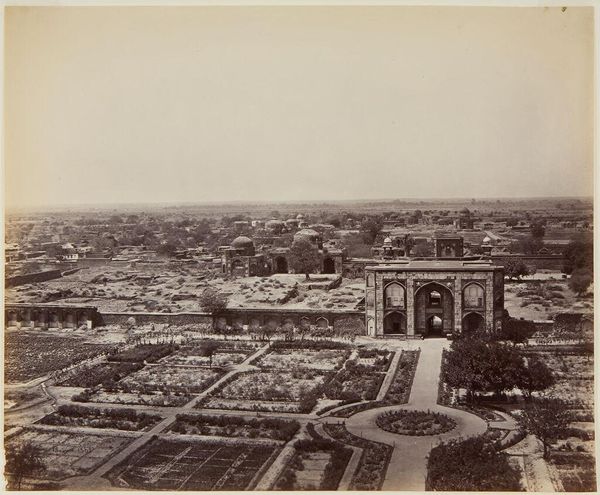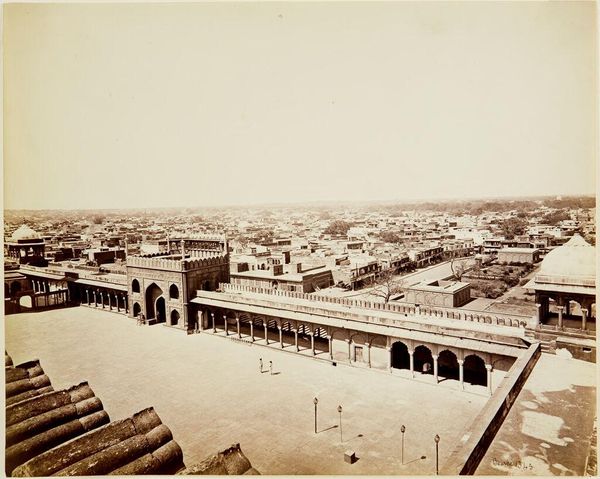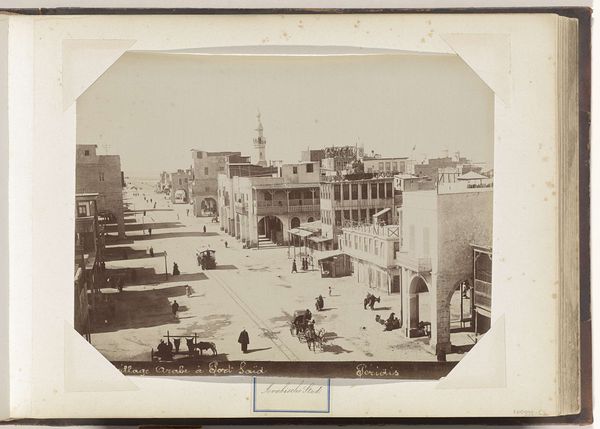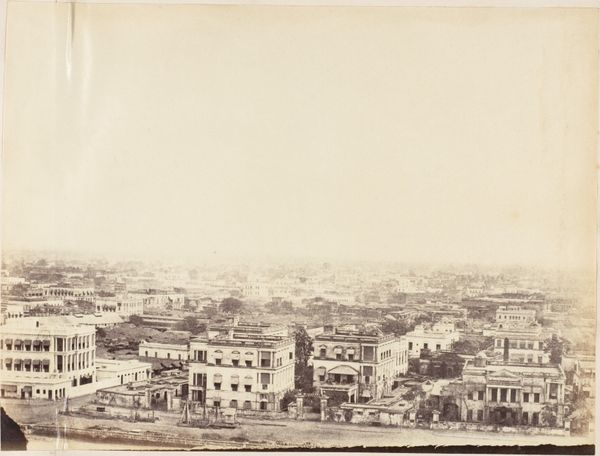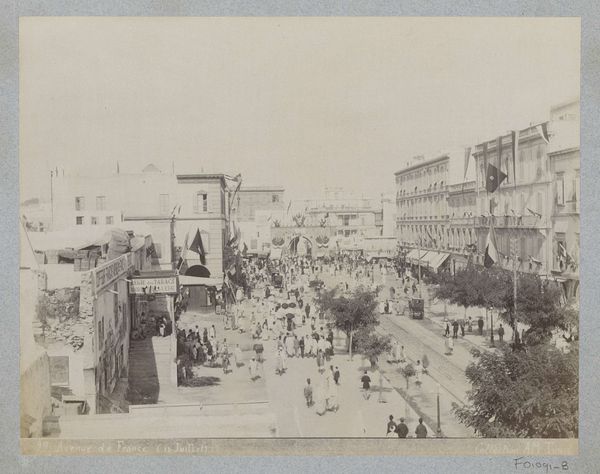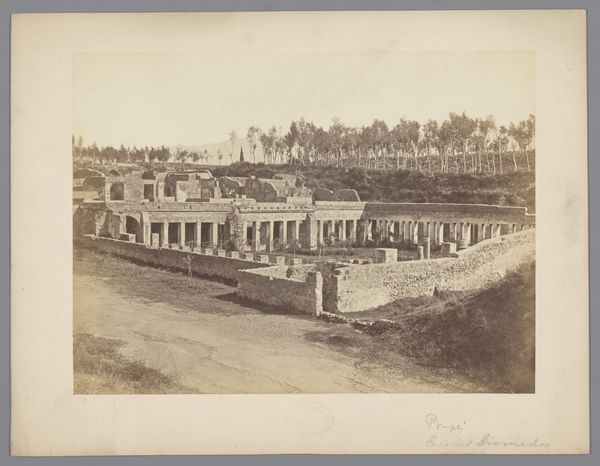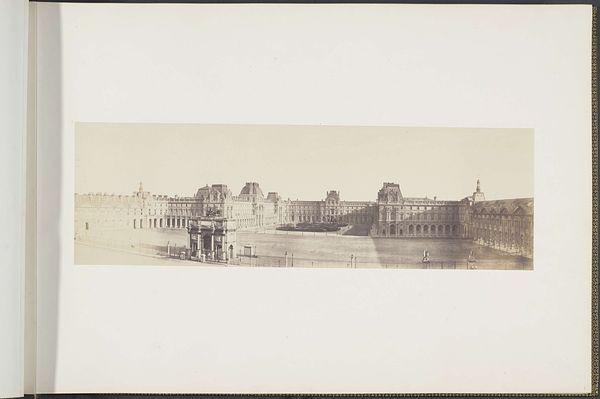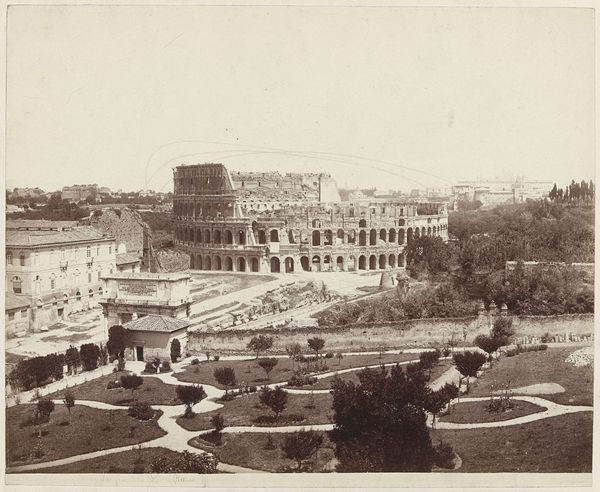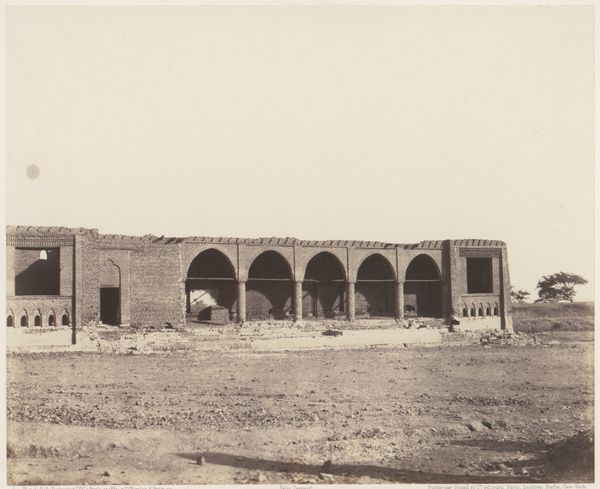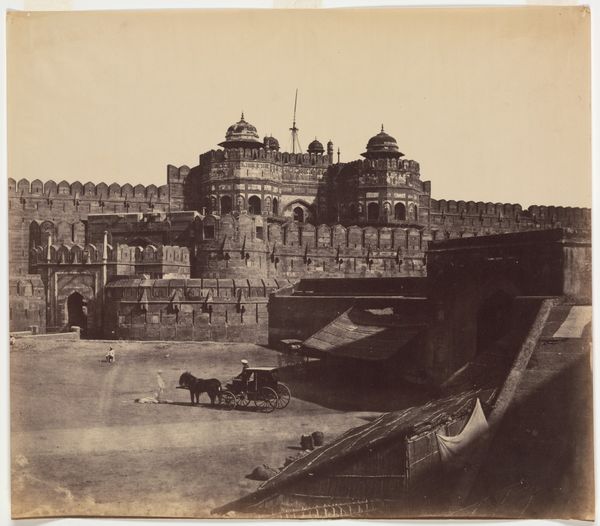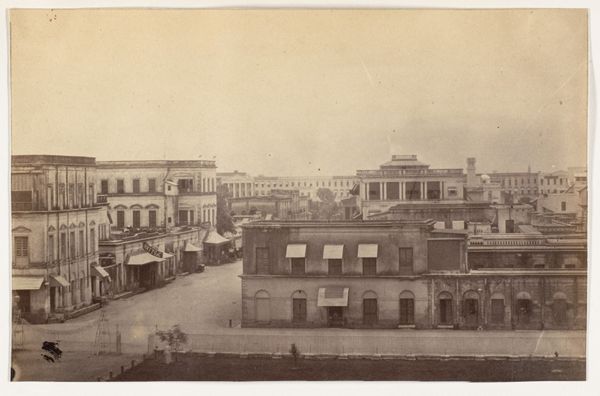![[Plaza of Canons, Teheran, Iran] (Maydan-i Top-khaneh) by Luigi Pesce](/_next/image?url=https%3A%2F%2Fd2w8kbdekdi1gv.cloudfront.net%2FeyJidWNrZXQiOiAiYXJ0ZXJhLWltYWdlcy1idWNrZXQiLCAia2V5IjogImFydHdvcmtzLzdiMmQyNjg0LTAwZmItNGU5My1iNjM4LTMyMjUwYTBjYzdhMy83YjJkMjY4NC0wMGZiLTRlOTMtYjYzOC0zMjI1MGEwY2M3YTNfZnVsbC5qcGciLCAiZWRpdHMiOiB7InJlc2l6ZSI6IHsid2lkdGgiOiAxOTIwLCAiaGVpZ2h0IjogMTkyMCwgImZpdCI6ICJpbnNpZGUifX19&w=3840&q=75)
[Plaza of Canons, Teheran, Iran] (Maydan-i Top-khaneh) 1840 - 1869
0:00
0:00
photography, albumen-print, architecture
#
print photography
#
16_19th-century
#
photo restoration
#
photography
#
historical photography
#
arch
#
19th century
#
cityscape
#
islamic-art
#
albumen-print
#
architecture
#
building
Copyright: Public Domain
Curator: Looking at this image, the domes and arches create such a repeating visual rhythm, don't they? A somber rhythm, I might add. Editor: Indeed. We're examining an albumen print titled "[Plaza of Canons, Teheran, Iran] (Maydan-i Top-khaneh)" by Luigi Pesce, dating between 1840 and 1869. It's part of the Metropolitan Museum of Art's collection, and what strikes me is the photograph’s capacity to both document and subtly shape our perception of this historic cityscape. Curator: Exactly! The choice to photograph the plaza from this elevated angle completely changes our symbolic relationship to it. We’re positioned as detached observers. I see a symbolic representation of the historical gaze, if you will. How were outsiders meant to understand Iranian civic life? Editor: Precisely. And the arches and domes that capture your attention might represent resilience. Historically, the Maydan-i Top-khaneh was a crucial center for military parades and public gatherings. The architecture serves a very public function; Pesce is representing an enduring symbol of power through building. Curator: The framing creates an atmosphere that speaks volumes about the relationship between architecture and collective memory. What kind of associations would 19th century audiences connect with domes and arches? Do you see certain power dynamics expressed? Editor: The plaza was often used for royal ceremonies and displays of military might. Consider that relationship of state and spectator. But let's remember, photography was still quite novel. To freeze this space in time…what did that mean for civic memory, how did photographic images influence historical understanding? Curator: It introduces an interesting layer of permanence and what we now consider "evidence". You've brought to my mind that photography, still fresh, had to consciously develop its visual syntax to negotiate cultural spaces of all kinds. It's amazing how that's all captured here in monochrome. The light in the image has a spectral quality. Editor: Indeed. Perhaps Pesce wished to frame Teheran as both grand and imposing for the Western eye. We've walked away thinking much more about this historical instant frozen on an albumen print than first appearances might reveal. Curator: It’s been a very fruitful, resonant glimpse into a different time and place. I shall hold onto those arches a bit longer today.
Comments
No comments
Be the first to comment and join the conversation on the ultimate creative platform.

